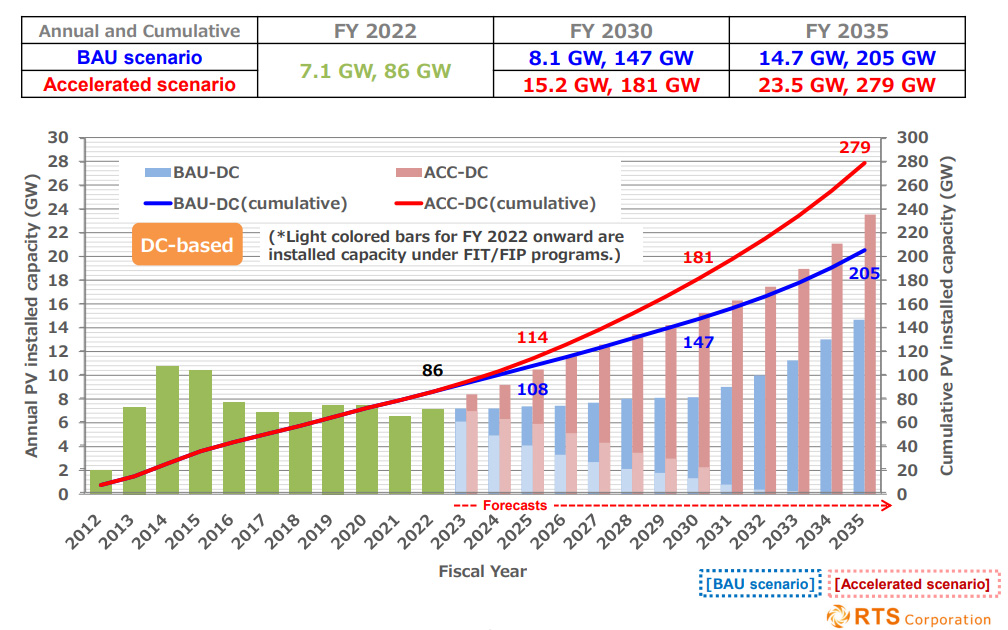Japan Solar Update: No.90 (Apr 1 ~ 5, 2023)
RTS Corporation provides a forecast of PV installed capacity in Japan, considering the changes in society, economy, policies, markets, products, technologies, prices, etc. over the next decade or so.
This forecast is based on two scenarios : the Business As Usual (BAU) scenario which assumes the achievement of the 2030 introduction target of the Sixth Strategic Energy Plan and the Accelerated scenario which assumes significant improvement and progress in the introduction environment.
BAU scenario:
Toward Fiscal Year (FY) ending in March 2030, PV introduction will expand with continued various support measures by the national and local governments, the introduction of PV for self-consumption addressing rising electricity bills, an increase in the number of consumers seeking green electricity with awareness of decarbonized management, and lowering of hurdles to introduction along with the widespread use of PPA. And from 2030 to 2035, it is assumed that the PV introduction will expand with the standardization and formation of a stable market.
Accelerated scenario:
Further strengthening of energy security and acceleration of climate change countermeasures will lead to new PV introduction and mandatory PV installations by policy. The users of renewable energy will increase across the supply chain, from large companies to SMEs, and the accomplishments of R&D of next-generation PV technology cultivated early 2020s will broaden social implementation of PV power generation to places where it is difficult to install PV systems today.
With the spread of power storage stations, EVs, V2H (Vehicle to Home) and V2G (Vehicle to Grid) following the progress of cost reduction in power storage technology, aggregation and supply-demand adjustment by VPP, and local production for local consumption of energy will become common, and the issues of PV power generation such as variability will be solved. It is estimated that the PV markets for multiple uses of land and space will be launched: building integrated PV (BIPV) systems, PV systems integrated with infrastructure such as roads and railways, AgroPV systems, and floating PV (FPV) systems. As a result, the annual PV installed capacity is forecasted to increase from 7 GWDC today to 15.2 GWDC in FY 2030. From FY 2030 onwards, grid constraints will be greatly eased by the improvement of grids and development of dispatching power sources, and the use of farmland will expand. It is estimated that the PV installed capacity will reach 23.5 GWDC annually and 279 GWDC cumulatively by FY 2035.
Please click here for more information

